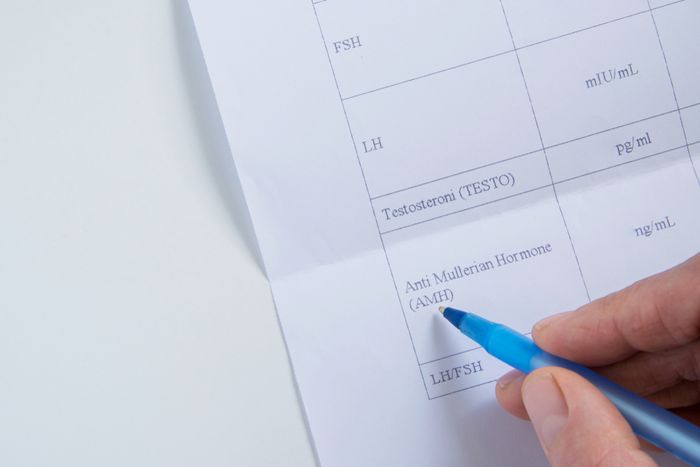Decoding AMH Levels: What They Mean for Your Fertility Journey
Updated November 7, 2023.

In my experience with clients, many people do not have the Anti-Müllerian Hormone (AMH) explained to them properly and it can be an unnecessary source of stress, anxiety, or assumption that a pregnancy may not happen for them. In fact, ACOG recommends against testing for AMH, unless a woman is specifically seeking fertility treatment.
However, when looking at a woman in a holistic picture, AMH can add to the larger picture of where a body may or may not need support and can also give insight into potential response to fertility treatment and even a potential flag for PCOS.
So, let's see how you can decode your AMH levels if you decide to get them tested so that you can have a clearer understanding of what they actually mean when it comes to your fertility journey.
AMH Levels For Fertility
AMH is produced by the ovarian follicles, which can offer valuable insight into a woman's ovarian reserve (how many eggs remain since women are born with a finite number).
AMH levels are about egg stores and quantity and not necessarily the egg health or chances for conception or health of our oocyte/eggs. It's important to remember, AMH levels do not mean your chances of conception are necessarily lower.
But we do need eggs in order to get pregnant. Factors that influence AMH levels include:
- Lifestyle
- Age
- Genetics
- PCOS
- Smoking
- Certain cancers/ovarian tumors
- Some medications/chemotherapy/radiation
- Obesity
- Vitamin D deficiency
What Is A "Good AMH Level for Fertility?
While there is debate about "normal" or optimal AMH levels, a typical AMH level for a woman in her cycling years is 1.0–4.0 ng/ml though this varies by age.
While higher levels generally reflect an increased ovarian reserve, levels above 4 can also indicate certain medical conditions such as PCOS.
What Is A "Good" AMH Level for IVF?
With IVF, we are still looking for similar numbers. Generally speaking, a higher AMH may indicate an improved response to ovarian stimulation with medication and potentially higher amounts of eggs upon retrieval.
However, when AMH is above 3.5 there is also a risk of over-response to treatment, which can cause ovarian hyperstimulation syndrome.
» Check out these ways to improve your chances of pregnancy
AMH Levels By Age
AMH levels increase as we age and are believed to peak at age 25, then naturally decline as we age before being non-detectable once we reach menopause. This decrease in AMH is a normal part of the aging process and part of the biology of being female.
I see a wide range of AMH levels in my practice and the general rule of thumb we follow is 1-4. However, it can be normal to see numbers lower in that range the older we get.
These are estimates of what AMH levels might be by age, though they could be higher or lower:
- 25 years old: 3.0 ng/mL
- 30 years old: 2.5 ng/mL
- 35 years old: 1.5 ng/ mL
- 40 years old: 1 ng/mL
- 45 years old: 0.5 ng/mL
How to Increase AMH Levels
We know AMH levels are based on our genetics and the natural aging process in some part, but there is a lot we can do to increase our AMH levels and support egg quality overall.
In my work, I look at the holistic picture of a woman and her partner, which includes:
- Diet
- Lifestyle
- Mindset
- Emotional support
- Herbs and supplements in their regimens
Addressing known factors that affect our AMH, like maintaining a healthy weight, not smoking, and getting adequate vitamin D, can all help in addition to general hormone-supportive interventions such as a healthy and balanced diet, decreased stress, good sleep, and gut and liver support.
» What to improve your diet? Try these nutrition tips to help when trying to conceive
Track Your Fertility Journey With Ease
AMH is just another piece of information in the larger support of a fertility journey. I hold it with a grain of salt and focus on strategies that are known to support fertility and overall hormonal health. Remember, a low or a high AMH level does not necessarily say anything about your egg quality or ability to get pregnant.
Fertility charting is a big part of the picture when looking to conceive and understand your fertility. It allows you to see cycle to cycle what is shifting within your hormones and fertility as a whole. Tempdrop can be a huge support in cycle charting, as it can aid in seeing if you have an adequate luteal phase and if you are ovulating.





